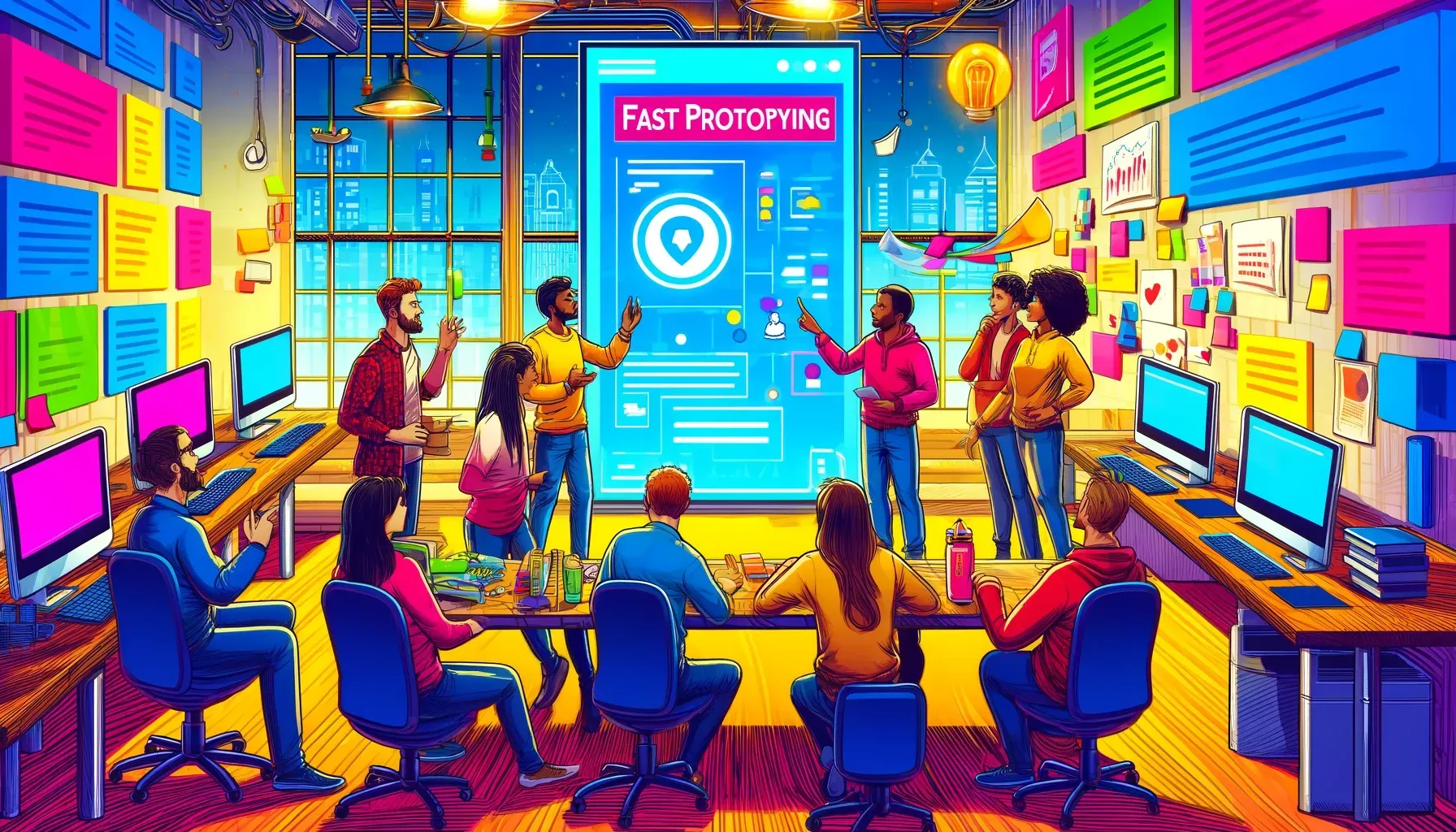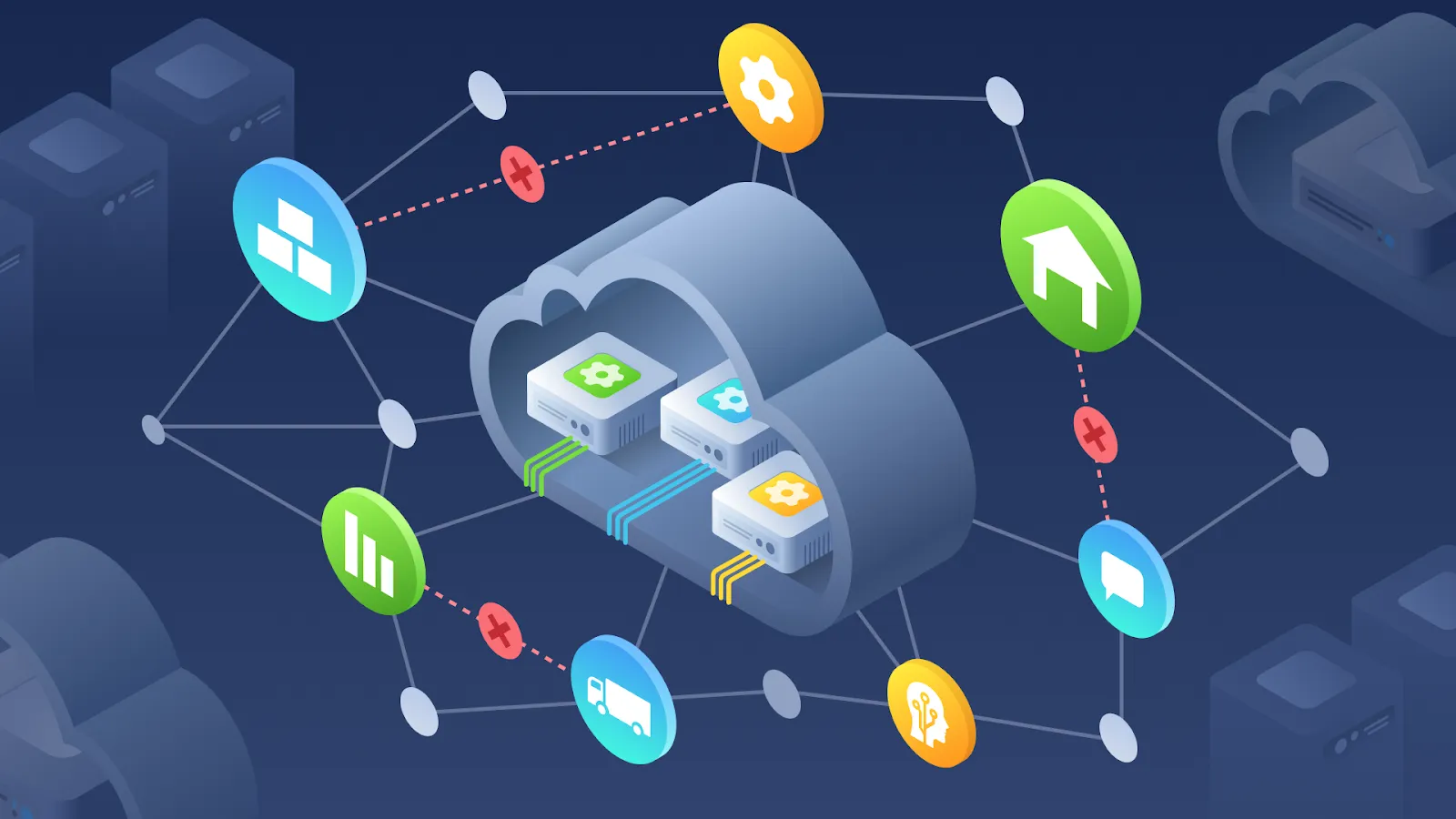The harsh reality of software startups is the fact many of them are failing. It’s the nature of the startup - a brave idea which can either disrupt an industry or disappear. Product development is not a sprint but a marathon. The secret of any long-distance run is to reach the destination before all the resources are exhausted. If one packs their backpack completely with everything they MAY need, there is a big chance either the backpack will be thrown away or the final destination will be never reached. But how do identify a bare minimum of things you need if you are dealing with some many unknowns? There is a tool in the software startups world which solves exactly this issue. I’m talking about prototyping the solution and presenting it to potential customers before doing anything else.
Thanks to prototypes, potential customers get an excellent opportunity to interact with the product’s look and feel. Thus, you can validate your idea and get feedback on each feature, function, or process, which is crucial for maximizing product value and guaranteeing it is tailored to user needs. This article will analyze all the ins and outs of blazing-fast prototyping, its differences from the typical one, and its key advantages. Let’s start!
What Is Rapid Prototyping in Software Development?
When developing software solutions, rapid prototyping is a specific process that requires designers to create a prototype to simulate the future app or website. All prototypes are interactive, making them look and perform like end products. But at the same time, they are not based on any working code, which is why such prototyping is called “rapid.”
Therefore, the key objective of blazing-fast prototyping is designing the product’s fundamental version quickly and providing its testing by the target audience, the development team, and the customer. That enables designers to adapt to relevant changes and move to the next versions, spending minimal costs.
When Should You Use Rapid Prototyping?
Prototyping is often neglected, but it should be implemented during all development stages in the agile framework. For instance, Kanban methodologies involve prototyping to help achieve specific goals or ensure proper releases. Also, Scrum-based projects can utilize it for translating the project scope into relevant sprints. Meanwhile, rapid prototyping can be efficient in the hybrid project management approaches (i.e. so called “Scrumban”) by assisting in targeting long-term objectives and release dates. As a result, your organization can apply such a prototyping type in the following cases:
- Blazing-fast prototyping enables the creation of intricate interactive models, mainly for large-scale projects. In this scenario, there is a need to break down prototypes into specific functional components. Thus, software development teams obtain a 360-degree view of the future product and the specific features they need to build.
- Regarding iterative app design, it allows for iterative prototypes that follow the agreed-on sprints’ frequency. Such prototypes often deal with minor changes that help build the final product.
- Besides, rapid prototyping is useful when intensive testing is needed to fix UX problems or solve other usability issues. Test feedback is a vital data source for both development and design teams collaborating on creating appropriate prototypes.
- Blazing-fast prototyping is valuable when focusing on the core project features. In the case of more extensive projects, it helps to pay great attention to the specific features instead of concentrating on the whole product. So, the particular approach can save time and money as it often takes some weeks for prototyping in full.
- Your organization should consider rapid prototyping when UX design is the point of primary importance. Here, high-fidelity prototypes can promote the project’s success since they are tested by real users more meaningfully. After all, these prototypes contain realistic elements, spaces, and colors, along with clickable buttons and necessary functions.
How Do Traditional and Rapid Prototyping Differ?
Rapid prototyping requires accelerating the design process to produce similar or even superior results regarding the prototype. So, let’s analyze some crucial factors that make a difference between the two approaches.
Budget
When implementing a traditional method, you must deal with non-interactive prototypes (wireframes), which provokes the danger of overrunning the project’s budget. Instead, blazing-fast prototyping enables project stakeholders to calculate the final cost depending on working and interactive prototypes. Here, the most essential benefit is the opportunity to spot and address issues in the early stages. That can help save a significant amount of money.
Flexibility
Complicated wireframes can be easy for designers and developers to understand, but many other project stakeholders may have no appropriate knowledge about laying out relevant processes. It means the specialist must explain all the ins and outs related to the prototype’s capabilities. On the other hand, rapid prototyping involves self-explanatory processes as each stakeholder can check different features to know what they do. Thus, design approvals take less time, and the development process is faster.
Customer Involvement
Unfortunately, often prototyping process often consists of many internal iterations that do not involve customer participation. I don’t think it’s a good thing. The prototyping process should be blazing-fast, with the only goal - provide end-users with understanding how the product is going to look like. The earlier feedback is received, the faster product development can be put into the right direction.
Key Advantages of Rapid Prototyping in Software Development
The list of the crucial benefits of blazing-fast prototyping is unlimited as it relies on the project scale. Below, you can check how your organization will win from adopting it.
Revealing Implicit Tech Requirements
A traditional trap for dev teams is when many design-related instructions are implied rather than articulated. However, rapid prototyping allows for filling the blanks and replacing untold expectations with clear instructions.
Keeping Focus on Customer-Oriented Scenarios
When programmers begin to “guess” instead of analyzing design specifics with customers, the final product will be pretty different from the one supposed to become a successful app with a user-friendly interface. However, blazing-fast prototyping in software development may efficiently fight bias since it allows for proper testing and iteration. That enables software engineers to implement required changes quickly before the product’s release.
Minimizing Budget Overruns and Avoiding Project Delays
Massive expenses and the inability to meet project schedules are typical for re-engineering software architecture. With blazing-fast prototyping, your organization can avoid such issues from the start, which, in turn, helps reduce time to market and eliminate general labor costs.
Maximizing Learning with Less Effort
The good news is that rapid prototyping requires no extended research or specific strategic sessions. Instead, you can take necessary notes during the rapid prototyping process and explore details, providing valuable design-related data within a strict timeline.
Transforming Typical Problem-Solving Mindset
Blazing-fast prototyping differs from traditional problem-solving. The latter approach involves discussing ideas about the potential ways to address stated problems but in isolation from project stakeholders. Such debates result in presumed solutions, but the market defines their success or failure after all the work is completed and costs are spent. So, there is a 50/50 chance to obtain the desired results, while rapid prototyping can ensure 100% success.
Potential Issues Regarding Rapid Prototyping
Although software product prototyping is an approach that has a proven track record, you should not consider it a panacea for all issues that may happen during software development. So, when applying rapid prototyping, your organization must remember the following cons:
- Initial costs. This type of prototyping often requires extra work hours. No doubt, this initial investment pays back at the end, particularly when compared to the case of erroneous or misunderstood requirements. However, you should not forget about it when creating your project budget.
- Inappropriate focus on details. Although software engineers and UI/UX designers can fully understand the practice of rapid prototyping, it is sometimes too confusing for other project stakeholders. Thus, you should be ready to receive many comments regarding the form, not the substance. But you can avoid them by providing detailed guidance to everyone involved in the prototyping cycle.
- Volatile requirements. Prototyping may simultaneously serve a cause and relevant solution to unstable requirements. It means that your company must ensure explicit prototyping modeling. Therefore, short iterations, direct questions, and a correctly chosen methodology to assess feedback will assist in reducing volatility. In other words, you will need to agree when planning will stop and will be turned into doing. There is no limit to perfection, but in the end customers need their problem solved!
4 Steps of Fast Prototyping
The phases of rapid prototyping are similar to traditional and interactive wireframing, but the UI design often demonstrates the actual product. Thus, such prototyping means creating a specific design instead of simplified wireframes, and its crucial steps are the following:
1. Identifying Client and End-Users’ Needs
The initial step covers creating a product requirements document. The latter outlines the project’s objectives, product features and functions, assumptions, and other critical data regarding the development scope. UI/UX designers can use such information to develop end-product functional components.
2. Collecting Feedback from Project Stakeholders
The second step is sharing a prototype with QA professionals, the client, and other project stakeholders. Here, there is a need to get feedback from real-life users, who are the most valuable sources of information, although they do not serve as stakeholders formally. Their feedback saves time and costs in the long-term perspective since that helps tweak and modify the prototype to meet the UX needs more efficiently.
3. Improving the Prototype UI Code And Functions
During the third stage, the design specialists collect and analyze feedback and translate it into action items to improve a prototype. So they can add the necessary missing features and eliminate several redundancies. The process is often iterative, going from Phase 1 to Phase 3 and back again to finally approve the prototype.
4. Sending Prototype to Developers
Finally, the approved prototype is delivered to the dev team. However, you must understand that this prototype may not be your final version. You may face particular development constraints regarding tech stack or cost that will provoke further iterations. So, the prototype can be returned to designers with an explanation of why specific components will not be implemented. Such a scenario may repeat several times, and some features can be added to the final product while others will be unavailable.
After all, rapid prototyping is crucial within this lengthy process and all phases it covers.
Crucial Questions to Answer Before Applying Rapid Prototyping
Blazing-fast prototyping provides significant value for both designers and developers. But before implementing it into the software development process, you should ask yourself the following critical questions:
- Do we need this type of prototyping? Although rapid prototyping brings great benefits in most cases, you must quantify them to the maximum possible extent.
- Do our designers have the correct tools? The appropriate understanding of rapid prototyping can be vital for selecting the right tool to get the most value.
- What framework can support our rapid prototyping? You should utilize iterative methodologies like Agile as blazing-fast prototyping requires quick turnaround times to get feedback and approval from other project stakeholders.
- Do we need to stay strict on release dates? One of the rapid prototyping’s key goals is reducing time-to-market. Thus, if your project has strict deadlines for product release, such prototyping is essential.
Final Thoughts
To conclude, blazing-fast prototyping in software development is conducted in the following circle manner: prototyping — testing — improving. During the first project stages, it enables programmers to validate requirements. Meanwhile, during later phases, rapid prototyping allows for tailoring the end product depending on the target audience’s vision and demands. After all, this approach has both short-term and long-term advantages, making your software development process less costly and contributing to the final product’s tangibility.
Are you considering creating a prototype to build your software product more effectively? Contact us today, and we will discuss how AgileVision can strengthen your efforts to create a solution that meets users’ needs and even exceeds their expectations.




